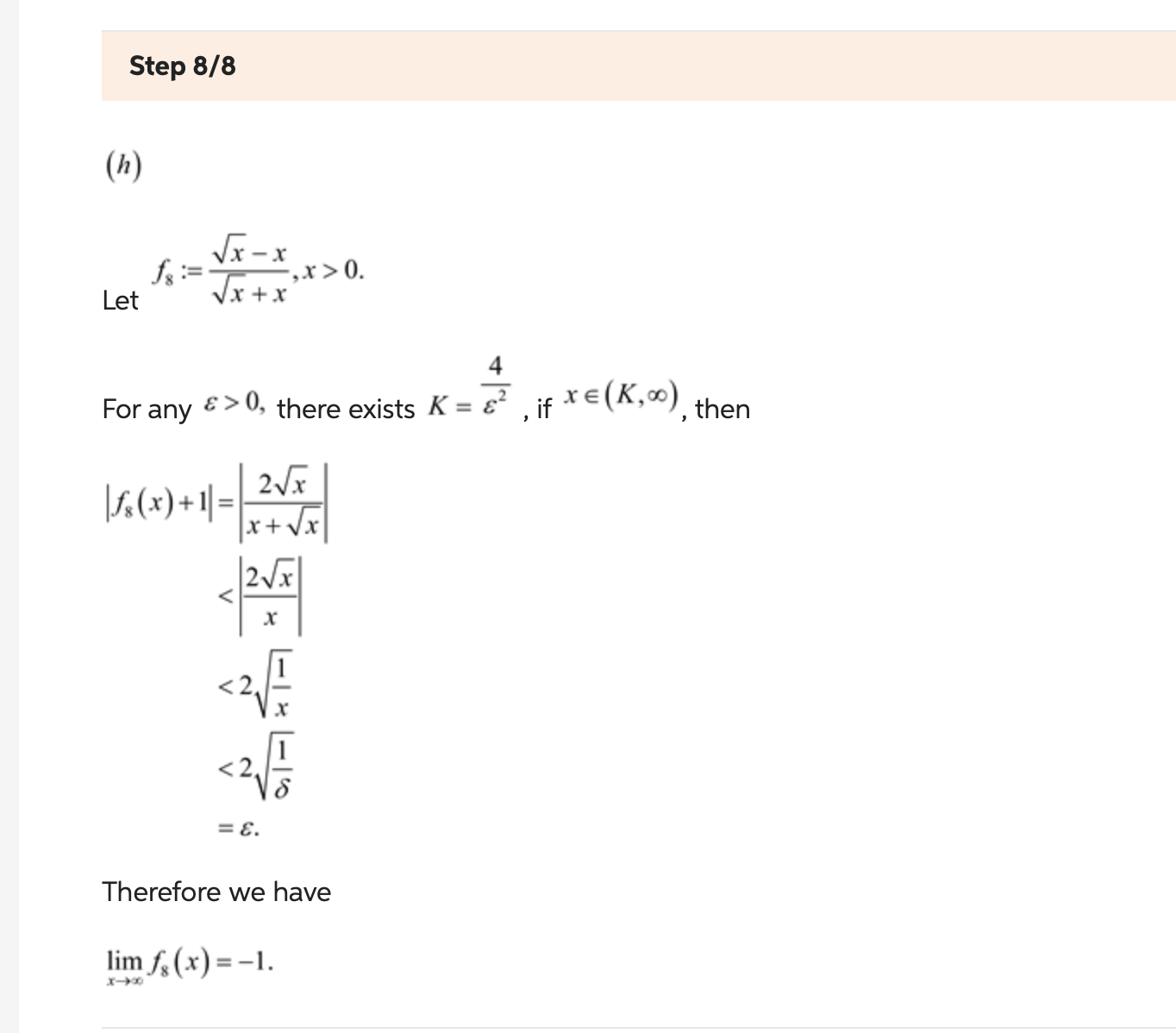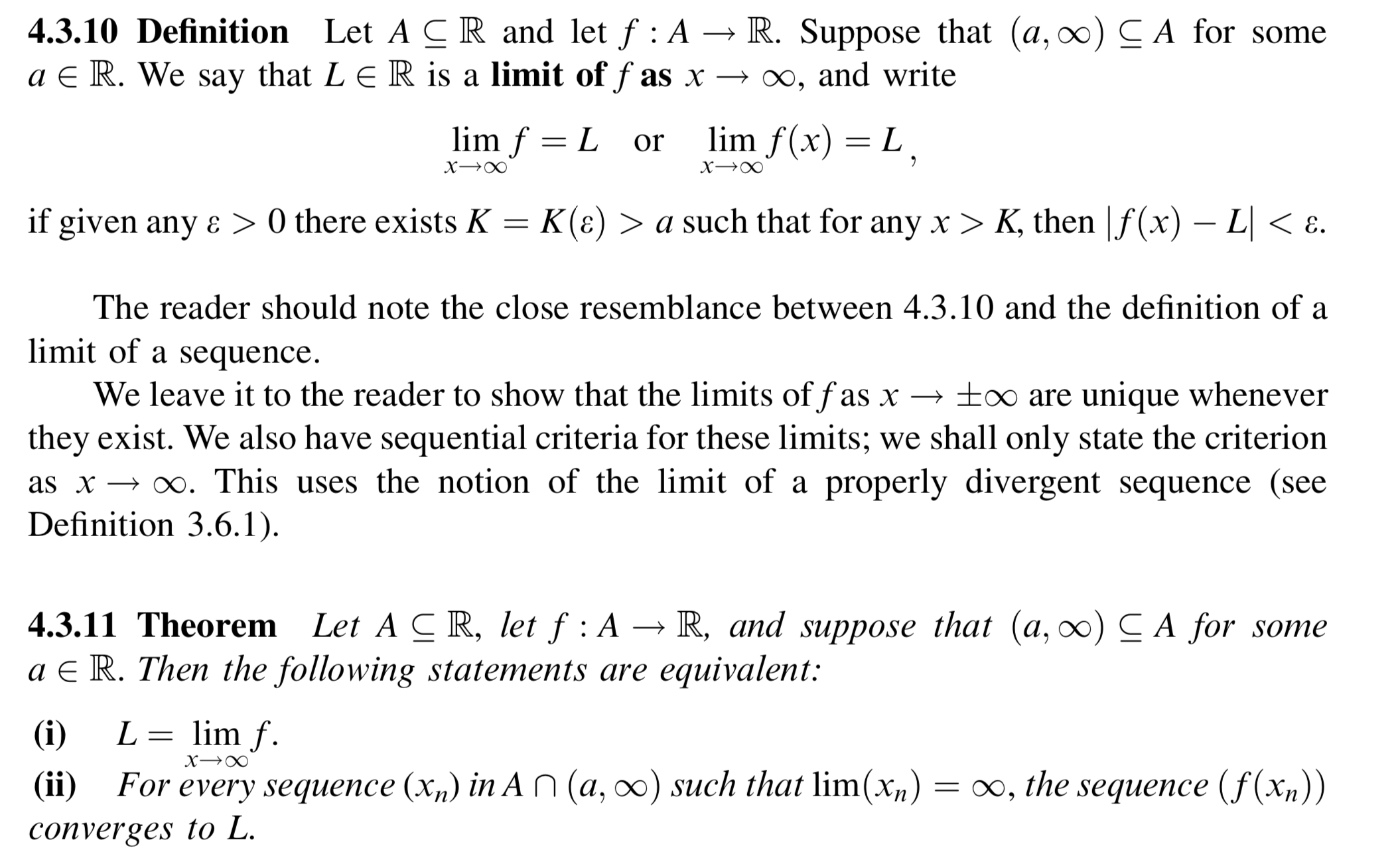Answered step by step
Verified Expert Solution
Question
1 Approved Answer
1. For the following limits, either a) evaluate them and rigorously show their convergence using any of the methods we discussed or b) rigorously



1. For the following limits, either a) evaluate them and rigorously show their convergence using any of the methods we discussed or b) rigorously show they do not exist: x3. 3+1 where A = (0,). x i) lim x ii) lim -xx1/3+x x1/3-x where A = (-, 0). (h) Step 8/8 x-x fs= ,x>0. Let x+x E For any &> 0, there exists K = &, if x = (K,), ther |fs(x)+1|= 2x s(x) + 1 = x + x a such that for any x > K, then |(x) L| < . The reader should note the close resemblance between 4.3.10 and the definition of a limit of a sequence. We leave it to the reader to show that the limits of fas x oo are unique whenever they exist. We also have sequential criteria for these limits; we shall only state the criterion as x . This uses the notion of the limit of a properly divergent sequence (see Definition 3.6.1). 4.3.11 Theorem Let A CR, let f : A >> R, and suppose that (a,) CA for some a = R. Then the following statements are equivalent: (i) L = lim f. X-X For every sequence (x) in An (a, ) such that lim(xn) = , the sequence (f(xn)) (ii) converges to L.
Step by Step Solution
There are 3 Steps involved in it
Step: 1

Get Instant Access to Expert-Tailored Solutions
See step-by-step solutions with expert insights and AI powered tools for academic success
Step: 2

Step: 3

Ace Your Homework with AI
Get the answers you need in no time with our AI-driven, step-by-step assistance
Get Started


